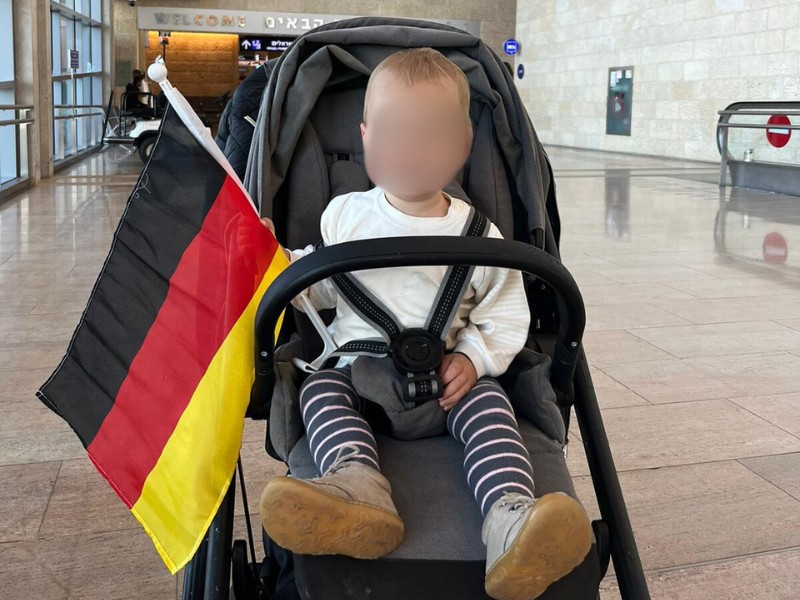Child Abduction and the Hague Convention: A Professional Analysis
My name is Ariela Rosenthal Sudry, and I have been a lawyer specializing in child abduction for 25 years.
Throughout my career, I have encountered numerous cases of international child abduction, and my experience has led me to a deep understanding of the Hague Convention and child return procedures.
In this article, I will present what child abduction is, detail the Hague Convention on the Civil Aspects of International Child Abduction, and explain how the legal process is conducted in the case of abduction.
What is Child Abduction?
Child abduction, in the legal context, refers to a situation where one parent moves the child to another country without the consent of the other parent and without legal authorization.
This action greatly impacts the child's welfare and the rights of the parents. Child abduction can cause severe emotional and psychological harm to the child, lead to family disputes, and result in international legal complications.
The Hague Convention on the Civil Aspects of International Child Abduction
The Hague Convention on the Civil Aspects of International Child Abduction came into effect in 1983. It is an international legal document aimed at addressing international child abduction.
The convention provides a legal mechanism for the return of children who have been wrongfully removed to or retained in a country other than their habitual residence.
The purpose of the convention is to protect children from the harmful effects of abductions and ensure their prompt return to their habitual residence.
Principles of the Convention
- Immediate Return of Children: The convention focuses on the immediate return of children to their habitual residence to restore the previous status quo and protect parental rights.
- International Cooperation: The convention requires signatory states to cooperate with each other and provide legal and technical assistance to ensure the return of abducted children.
- Prevention of Conflicting Decisions: The convention aims to prevent conflicting decisions between different countries, which could lead to legal complications and harm the child's welfare.
Procedure in the Event of Child Abduction
When a child abduction occurs, the following steps are taken according to the guidelines of the Hague Convention:
- Filing a Return Application: The parent seeking the child's return can file an application with the central authority in their country. The central authority will work to locate the child and contact the authorities in the country to which the child has been taken.
- Review of Return Conditions: The authority in the destination country will review whether the conditions for the child's return under the convention are met. For instance, whether the abduction violated custody rights under the habitual residence's laws and whether less than a year has passed since the abduction.
- Legal Determinations: If the conditions are met, the judicial authority in the destination country will issue an order for the child's return. It is important to note that there are cases where return may be refused, such as if returning the child would expose them to physical or psychological harm.
Where Does the Legal Process Take Place?
The legal process concerning child abduction involves several stages and locations, according to the Hague Convention:
- Central Authority in the Origin Country: The parent seeking the child's return submits the application to the central authority in the child's habitual residence (the origin country). The central authority is responsible for reviewing the application and forwarding it to the central authority in the country to which the child was taken (the destination country).
- Central Authority in the Destination Country: The central authority in the destination country receives the application and works to locate the child. Subsequently, the authority collaborates with legal, social, and police agencies to review the return conditions and conduct the necessary procedures.
- Court in the Destination Country: If the dispute cannot be resolved through agreement or mediation, the legal process will take place in the competent court in the destination country. The court will review the return application and determine if the conditions for return under the convention are met.
- Decision-Making: If the court decides that the abduction violated custody rights under the habitual residence's laws and believes that returning the child will not cause them physical or psychological harm, it will issue an order for the child's return to the habitual residence.
- Appeal: As with any legal process, there may be an opportunity to appeal the court's decision, depending on the destination country's laws.
- Execution of the Order: Following the decision, the authority in the destination country will act to return the child to the habitual residence. In some cases, additional assistance from the police or social services is required to ensure the order is executed safely and effectively.
Exceptional Cases
There are situations where the convention does not apply or where there are legal reasons to prevent the child's return:
- Time of Abduction: If more than a year has passed since the abduction and the child has already settled into the new environment, the judicial authority may refuse the return.
- Child's Welfare: If it can be proven that returning the child would cause them severe physical or psychological harm, the authority may decide not to return the child.
- Parental Consent: If the parent who had custody of the child consented to the abduction, the convention does not apply.
Conclusions
International child abduction is a complex and sensitive legal issue that requires professional and careful handling.
The Hague Convention provides an important mechanism for dealing with child abductions and ensuring their prompt return to their habitual residence.
However, each case must be examined individually and acted upon according to the convention's guidelines and the rights of the parents and children.

